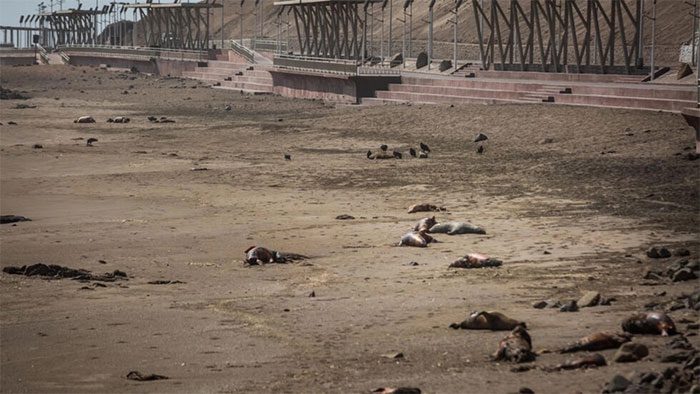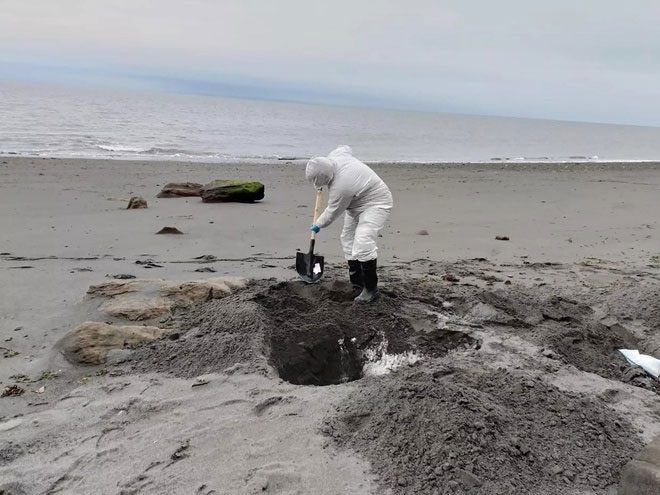The Chilean Fisheries Agency has reported that nearly 9,000 sea lions, penguins, otters, and marine mammals have died due to an outbreak of avian influenza off the northern coast of Chile.

Thousands of sea lions have washed up dead on beaches in Chile. (Photo: Arica Municipality/AFP/France 24).
According to France 24, the National Fisheries and Aquaculture Service of Chile recently stated that since the beginning of this year, over 7,600 sea lions and 1,186 Humboldt penguins—an endangered species that only inhabits Chile and Peru—along with various other species such as otters, dolphins, and porpoises, have been found dead along the coast.
The agency also reported that the outbreak has occurred in 12 out of 16 regions of Chile. They have activated surveillance measures along the coast, including the burial of infected animals to prevent the spread of the virus.
Since late 2021, the world has witnessed one of the worst avian influenza outbreaks. Tens of millions of poultry have been culled, wild birds have been dying in large numbers, and cases of infection in mammals have increased in several countries.

Officials in Chile are burying animals that died from avian influenza to prevent the spread of the virus. (Photo: Arica Municipality/AFP/France 24).
The Cambodian Ministry of Health reported that in mid-February, an 11-year-old girl died from H5N1 avian influenza with symptoms of fever, cough, and sore throat. Test results from her father were also positive, but the Cambodian Ministry of Health has ruled out the possibility of human-to-human transmission.
The disease avian influenza rarely infects mammals and is even rarer in humans. There is no cure for this disease, which often proves fatal for both wild and domestic birds.
In March, Chile reported its first human infection, involving a 53-year-old man. In other parts of South America, including Argentina, Brazil, Paraguay, and Peru, hundreds of sea lions have also been found dead.


















































